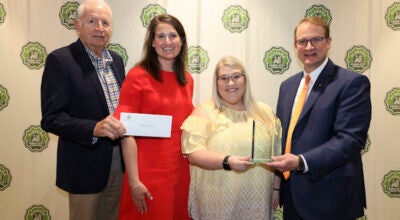Concerns arise over zoning
Published 10:20 pm Tuesday, August 18, 2009
Not everyone sees eye to eye on a proposed zoning ordinance for the Town of Thorsby.
City leaders and a representative of the Regional Planning Commission of Greater Birmingham, which has been working with the town to develop a comprehensive growth plan, hosted a public hearing on the issue Tuesday night.
“Changing your zoning does not change property values,” Steve Ostaseski of the RPC told citizens in attendance. “This proposed zoning map does not affect the use of your property.”
Ostaseski briefly outlined a few changes that would take place if the proposed ordinance were approved by the town’s council.
First, there would be more categories of zoning. For example, land zoned as agricultural could fall into one of two categories — pure agricultural, or rural residential. The latter would include restrictions on the number and size of livestock on the property, depending on the acreage.
Residential property could be zoned low, medium or high density, while commercial property could be mixed with certain types of residential such as townhomes or garden homes.
Industrial property could be zoned one of three categories — mining and manufacturing, light industrial, or heavy industrial.
“This plan gives the town better tools to develop a comprehensive plan,” Ostaseski said.
Dan Henry, a longtime business owner in the town and an experienced planner, had several concerns about the ordinance.
One major concern was that architectural standards and other regulations could prevent many businesses and homes from being rebuilt if they were vacant for a certain period of time or destroyed. In other words, they would be “nonconforming,” or not up to standard with the proposed ordinance.
This could also potentially make it difficult for property owners to obtain loans to upgrade their property, Henry indicated.
“The proposed ordinance would make most if not all of the commercial and industrial uses in the town nonconforming uses,” Henry wrote in written comments that were handed out at the meeting.
“If these uses were vacant for six months or 75-percent destroyed,” he continued, “they could not be rebuilt. I believe that lending agencies would not be willing to lend money to current land owners given those conditions.”
One example of the new standards would be requiring a large percentage of a structure to be wood or masonry.
There are many buildings in the town that are constructed with mostly metal .
Another example is trimmed parking regulations. Many buildings could only have parking on the side and in back.
Henry, who said the plan’s buffer and screening requirements are among the most stringent he has ever seen, said allowing more flexibility could bring more tax dollars into the town.
“The people of Thorsby have a pretty good idea of who they are and what they want,” he said.
The town’s planning commission will consider revisions to the plan at its next meeting and will likely schedule another public hearing at a later date.






